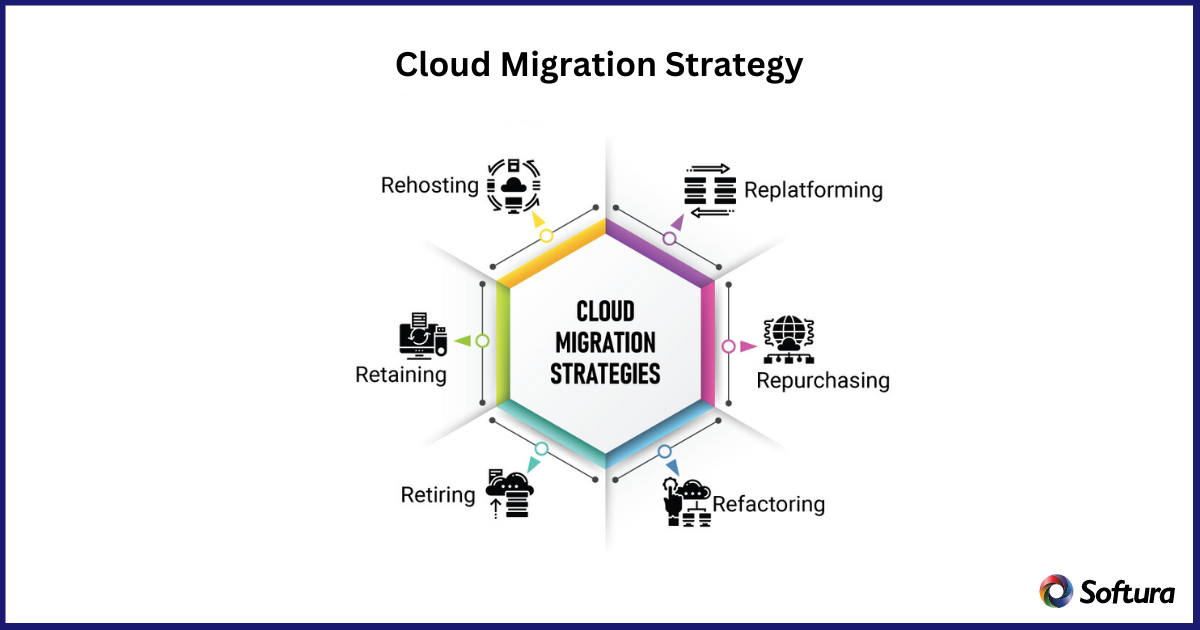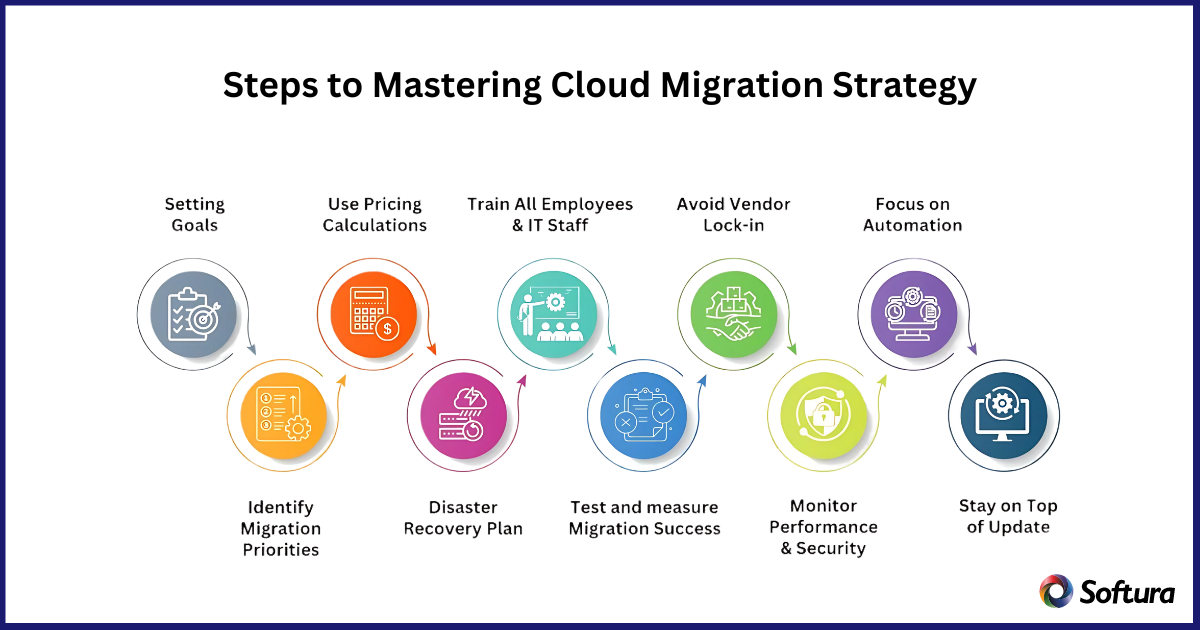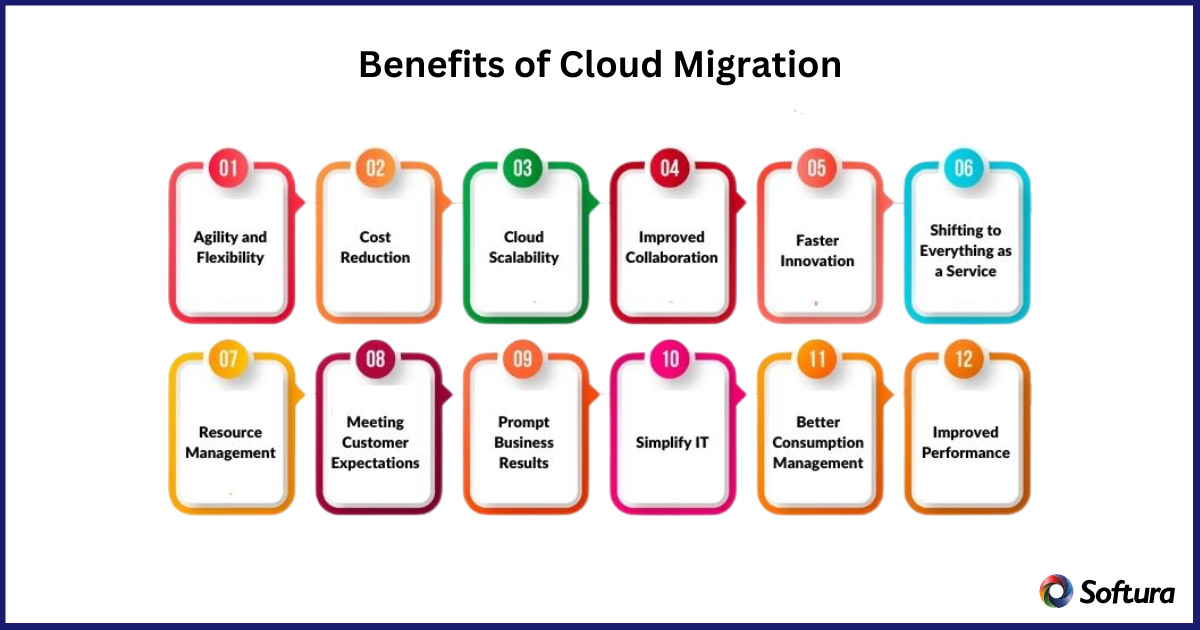"Our integration with the Google Nest smart thermostats through Aidoo Pro represents an unprecedented leap forward for our industry."
- Antonio Mediato, founder and CEO of Airzone.
We are now in the age of technological change. All kinds of companies are looking to the cloud to help them stay competitive, come up with new ideas, and grow. However, it's not easy to move your business to the cloud computing. A well-thought-out plan is needed for a cloud move to go smoothly. This blog post goes into detail about how to master your Cloud Migration Strategy in 2024 so that the move goes smoothly, and your system runs at its best.
A Cloud Migration Strategy is a detailed plan that shows how a company will move its digital assets, resources, data, and apps from its own infrastructure to the cloud.
This strategy plan is very important because it explains the why, what, how, and when of going to the cloud. This will make sure that the move fits with the general goals and needs of the company.
It includes a thorough analysis of the current infrastructure, a clear picture of the cloud environment that is wanted, and a plan that takes cost, security, compliance, and possible risks into account.
The plan also lays out the steps for implementation and improvement after the move. This way, the company can make the most of the cloud's growth, freedom, and innovation. A well-thought-out Cloud Migration Strategy is essential for any business that wants to improve service delivery, cut costs, and boost operating efficiency.

"Our integration with the Google Nest smart thermostats through Aidoo Pro represents an unprecedented leap forward for our industry."
- Antonio Mediato, founder and CEO of Airzone.
A cloud migration strategy is essential because it helps,
Without a robust strategy, businesses risk data loss, unexpected costs, and operational disruptions.
"By analyzing the data from our connected lights, devices and systems, our goal is to create additional value for our customers through data-enabled services that unlock new capabilities and experiences."
- Harsh Chitale, leader of Philips Lighting’s Professional Business.
Cloud Migration Strategy Example on Assessment and Planning:
Netflix, a popular video service, had to quickly grow to keep up with customer demand. After a careful analysis, they chose to move to the cloud to handle the huge increase in people and data. They carefully planned and chose the public cloud because it can grow and change with the needs of the business. This made it possible for Netflix to offer its service to people all over the world and handle millions of users at the same time without slowing down.
Benefits of Assessment and Planning in a Cloud Migration Strategy:
"By analyzing the data from our connected lights, devices and systems, our goal is to create additional value for our customers through data-enabled services that unlock new capabilities and experiences."
- Harsh Chitale, leader of Philips Lighting’s Professional Business.
Looking for Cloud Migration Services?
Develop cloud application and integrate it into your business processes with Softura's dedicated offshore app developers!
Finding the right people to hire dedicated developers and teach them can be like trying to sail through a storm when it comes to the costs involved. Staff augmentation is your better alternate plan, which can vastly cut down on such hiring and maintenance expenses.
By hiring people who are already ready to work, you can avoid the high costs and time-consuming processes that come with standard hiring. You only pay for the work you need when you need it, like a subscription service for great art. By taking this method, you can save money and avoid the problems that come with having too many or too few full-time workers when your task changes.
Here are the important R’s of a Migration plan:
An Example on Migration to Cloud Strategy:
Dropbox used to use technology from other companies, but now it uses its own cloud, called Magic Pocket. This move was carefully planned to make sure that users would have as little downtime as possible while also moving huge amounts of data. Dropbox moved more than 500 petabytes of data easily by making a solid transfer plan. This improved speed and cut running costs by a large amount.
Benefits of Designing Your Migration Plan in a Cloud Migration Strategy:

"By analyzing the data from our connected lights, devices and systems, our goal is to create additional value for our customers through data-enabled services that unlock new capabilities and experiences."
- Harsh Chitale, leader of Philips Lighting’s Professional Business.
Cloud Migration Strategy Example on Executing the Migration:
Etsy is an online store that sells handmade and old goods. When it moved to the cloud, it focused on automation and CI/CD, which stands for continuous development and continuous release. Their base was Google Cloud, and automatic tools were used to make sure the move went smoothly. Etsy was able to use advanced data analytics and machine learning tools after the move. These tools helped improve search functions and selection algorithms, which made the customer experience better.
Benefits of Migration using Automation in a Cloud Migration Strategy:

Training and Support: Make sure your team knows how to use the new cloud setting well and set up a way for them to get help when they have problems.
Cost Management: Keep an eye on and control your cloud spending on a regular basis to avoid costs that you didn't expect.
Continuous Improvement: The cloud is always changing. To keep your system better, keep up with new tools and features.
Impact of Post-Migration Strategy Learned from a Real Cloud Migration Strategy Example:
A big U.S. bank called Capital One not only moved to the cloud, but they also put a lot of thought into what they would do afterward. After switching to AWS, they put a lot of money into teaching their staff to become experts in cloud technologies. In order to keep track of their spending and make the best use of their resources all the time, they also set up a strong cost-management system. Capital One's plan for after the move makes sure they get the most out of the cloud while keeping their security high.
Benefits of Post-Migration Plans in a Cloud Migration Strategy:
Cost Optimization: Regular review and management of cloud spending prevent budget overruns and promote cost-efficiency.
Continuous Improvement: Enables ongoing enhancements to the cloud environment, taking advantage of new features and technologies.
Enhanced Security Posture: Continuous monitoring and updates improve security measures, adapting to new threats.
Scalability and Flexibility: Ensures the cloud infrastructure can scale and evolve as the business grows and changes, maintaining its alignment with business needs.
To master your Cloud Migration Strategy in 2024, you will need to carefully plan, carry out, and keep improving it. It's about knowing what your business needs, picking the right computer setting, making sure security and compliance, and always being ready for change. Businesses can get the most out of cloud technology's freedom, growth, and new ideas by using a well-thought-out cloud transfer plan.
Softura’s cloud enablement services can help your business find its way through this complicated process. Get in touch with us to use our services and make your move to the cloud go smoothly.
"Our integration with the Google Nest smart thermostats through Aidoo Pro represents an unprecedented leap forward for our industry."
- Antonio Mediato, founder and CEO of Airzone.
Are you ready for your next project?
Unlock your company's full potential with our comprehensive Software development services. Contact our experts today to discuss how we can drive your success together.